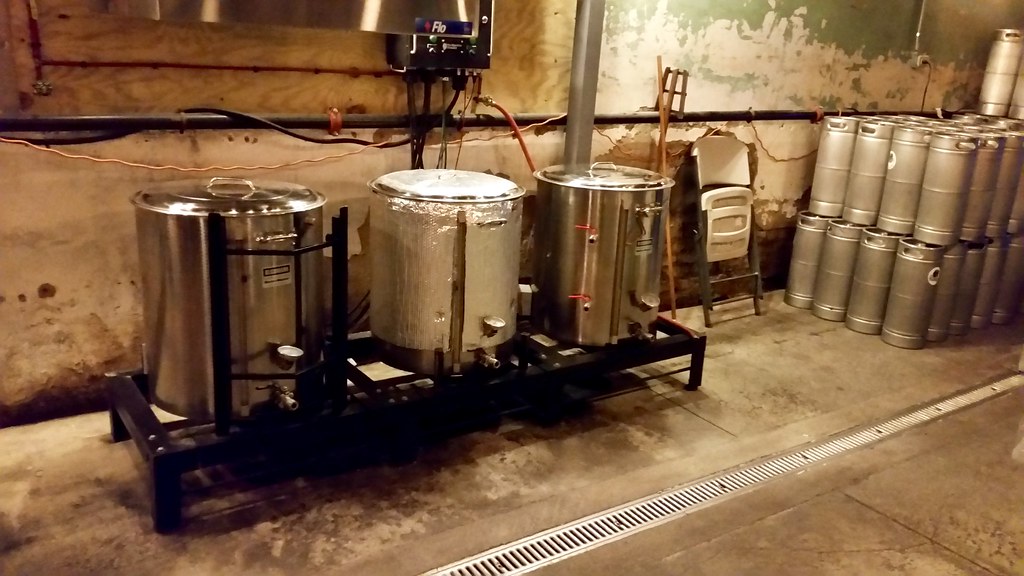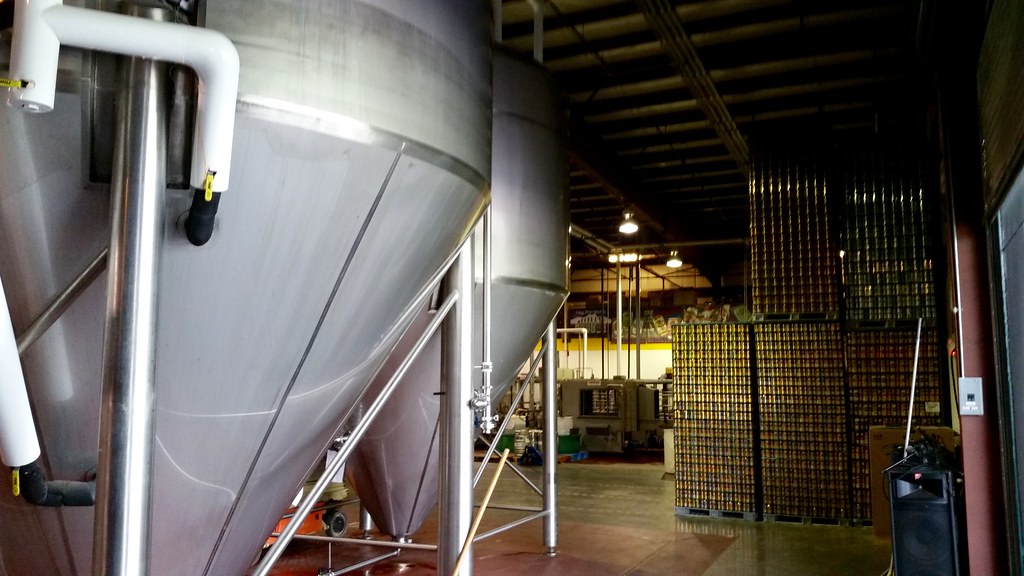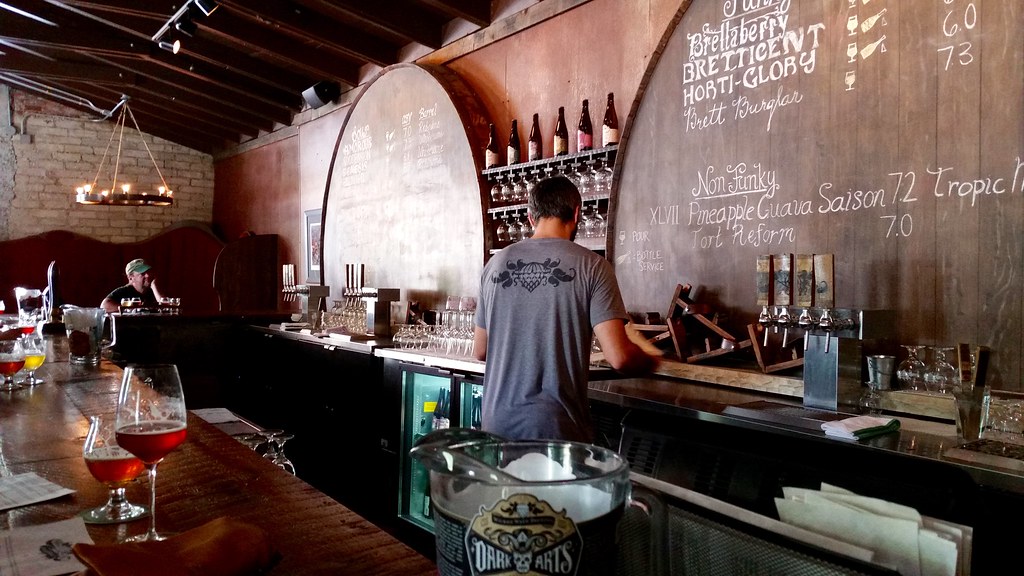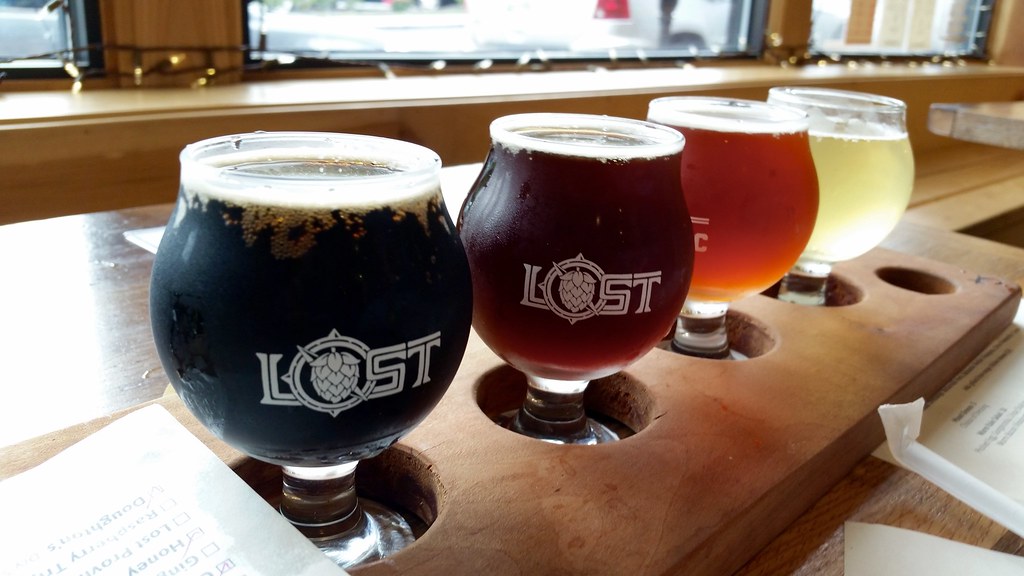Originally we’d hoped to travel north to the Thousand Islands region of New York. Unfortunately we waited too long to make our plans and couldn’t find anywhere decent to stay. Anyway, I quickly shifted my thoughts to Asheville, North Carolina, a place that had been on my mind for quite awhile. It combined an abundance of absurdly beautiful scenery with a massive concentration of craft breweries and brewpubs.
I’ve taken beer-oriented vacations before (Bend, Oregon for instance). So I wanted to replicate that experience at an East Coast destination. We visited tons of great places unrelated to beer too, and those are being chronicled in other entries. This one will be devoted purely to the breweries.
I realize that most of the Twelve Mile Circle audience will choose to skip this topic. That’s fine, please come back in a couple of days. I’m writing this article for myself and for the small Venn diagram intersection of readers whose interests include both geo-oddities and zymurgy.
A Productive Trip

We visited sixteen breweries by my count. Meanwhile, photos hit the 12MC Twitter Site in real time at ridiculous levels even by my own admission. My lifelong brewery visit list clicked up to 330 by the end of the trip. The map looked pretty good too, if I do say so myself!
Of course, the pursuit required some advance planning. I prepared an overly detailed spreadsheet that listed each facility by distance from our rental home along with abundant logistical flourishes. I’m not sure it would benefit the entire Internet to see my handiwork. However, I’d be glad to share a link with individuals upon request.
I also built responsibility into the equation. Visits were evenly spaced throughout the week and many of them were within walking distance of our home. We stuck primarily to shared 4-ounce sampler glasses. Rarely did we consume more than the equivalent of a single pint at any given location.
So this was about tasting the craftsmanship that went into each batch. Oddly, I wouldn’t feel it necessary to post a similar disclaimer if we’d gone on a wine tasting excursion. However, beer has a certain reputation with the general public even when people approach it from an appreciative perspective.
Many communities could prosper if they embraced beer tourism. I know we pumped a considerable amount of money into the Asheville economy: a one-week home rental; groceries; restaurant meals; tourist attractions; fuel and of course a string of purchases at several of the area breweries. The economic benefits from our family of four extended far beyond the breweries themselves. Multiply that by thousands of people and it could become a true financial force as I’m sure Asheville already noticed.
In the Beginning

A special shout-out had to go to Highland Brewing, the very first brewery opening in Asheville all the way back in 1994. It’s grown considerably larger since those humble beginnings. Now Highland operates from a large production brewery on the edge of town (map).
They’ve added a large tasting room plus an outdoor stage and biergarten for summer weekends. Highland sparked the whole scene that placed Asheville on the short list of cities with the highest per capita number of breweries. They even put it on par with parts of Oregon. Of course we had to include Highland on our list of visits.
Very Smallest to Very Largest

The scene attracted newcomers of all dimensions. The smallest contender seemed to be the One World Brewing nanobrewery (map). The entire brewing operation fit within a corner of a single room, just a step removed from what an ambitious homebrewer might create in his garage. The operation had the feeling of a speakeasy.
In downtown Asheville we followed a sandwich board to the end of a nondescript alley. Then we walked through a darkened doorway and down a couple of flights of industrial stairs into a mysterious subterranean space below a burger restaurant. We entered a dimly lit room. A bar stood at one end with the aforementioned brewing equipment along with some dartboards and such.
Somehow the proprietors managed to keep several beers on tap at all times using their tiny 1.5 Barrel system. I felt like the brewers were living the dream. They cranked out batches during the day and operating like a bar in the evening in their bare-bones basement far below street level.

Big guys stood at the far end of the spectrum. Oskar Blues opened its huge East Coast brewery down the road in Brevard in late 2012 (map). We made a detour to Oskar Blues because I’d never been to Transylvania County before. Seriously, North Carolina had a county called Transylvania. Otherwise I probably would have stopped at the new Sierra Nevada brewery that opened just this summer out by the Asheville Regional Airport instead. Those two will be joined by New Belgium in early 2016. Clearly the heavyweights noticed Asheville and liked what they saw.
South Slope
Many of the Asheville breweries packed into a single, small quadrant called South Slope. There they found shared synergy instead of direct competition. They were located immediately south of downtown on downward slope, thus the name.
I created the map above not as a suggestion to hit all eight breweries in a single effort — that may be technically feasible although perhaps irresponsible — rather, to show their relative proximity and density. The entire path I drew stretched only a mile. Clustered all together were: Wicked Weed; Catawba; Green Man; Burial Beer; Twin Leaf; Wicked Weed’s Funkatorium; Hi-Wire and Asheville Brewing. Doubtless there will be others if some random Intertubes wanderer finds this page sometime in the future.

I thought hard about which of the many photos I took would represent the wide variety of South Slope breweries. Ultimately I selected the above image from Wicked Weed’s Funkatorium (map). This is where the brewery ran its Barrel Program of aged and blended, funky and sour beers. Notice the shape of the glasses on the bar and the color of the beverages. It was the only place in Asheville that we visited twice during our trip. If I return again it will be to visit the Funkatorium.
Other photos of note included the mural of Tom Tom Selleck with Sloth from the Goonies at Burial Beer because it amused me. Also, I loved the beautiful sampler tray at Catawba.
Outside of the Area

We also hit a select few breweries on the way to Asheville and on our way home. I chose a photo from Lost Province Brewing in Boone, North Carolina (map) because it had an interesting geographic story, and 12MC purports to be all about geography even if the current article deviates from the theme. As noted in Appalachian History,
“North Carolinians for many decades thought of them as the Lost Provinces. Prior to the early 20th century, Ashe, Alleghany, and Watauga counties were hemmed in and separated from the rest of the state by the Eastern Continental Divide— average elevation 2,500 to 3,000 feet— which forms their eastern and southern borders. Lowlanders joked that the only way to get there was to be born there.”
In tribute, the brewery included a compass rose in its logo to help people find those Lost Provinces.
I had to leave out lots of noteworthy breweries we visited because of space limitations. Feel free to check my Flickr album if you still need to see a crazy amount of Western North Carolina brewery photos.

Leave a Reply